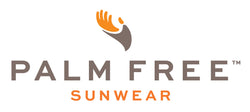What are actinic keratosis? (plural actinic keratoses)
Actinic keratosis is precancerous skin lesion that can progress into squamous cell carcinomas if not treated. If you have these lesions and continue to get sun exposure they can progress more quickly. These affect mainly fair-skin individuals, however I have treated many actinic keratoses in the darker skin individual with outdoor occupations. Chronic and acute ultraviolet light exposure, aka sun exposure is the main cause.
Why are more people getting actinic keratosis?
With our thinning ozone and our first world wealth of enjoying our leisure time in the sun, the rate of actinic keratosis is on the rise and expected to continue. The various ways to treat these are with creams, in-office treatments, some requiring physical destruction.


What should I do if I have actinic keratosis?
If you suspect you have actinic keratoses (patches of skin will feel like gritty sandpaper), I strongly recommend you see your dermatologist or dermatology PA or NP for evaluation and to discuss the best treatment depending location of the lesion(s), i.e. face, scalp, ears, neck, hands and arms.
What is the cost of treatment for actinic keratosis?
The cost of treating actinic keratosis with creams varies from $134 to $949. The goodrx.com provides coupons for these medications that may reduce the cost significantly, however these coupons are not always honored.
In office procedures such as Photodynamic Therapy (blue light) can cost between $1200 – $3000, chemical peels are around $200, dermabrasion up to $2000, and laser treatments up to $4000. For single or few actinic keratoses, liquid nitrogen works well and can cost $70 up to $240 and is administered by a dermatologist or dermatology PA or NP.
These costs are in addition to the dermatology office visit, which can vary from $50 – $150.
Is treatment of actinic keratosis painful?
All treatments cause some form of destruction to the actinic keratotic lesion resulting in redness, scabbing and sometimes ulceration. The healing process can take 1 – 4 weeks and requires limited outside activity.

Not only does your pocketbook feel the pain but you do as well; all these treatments cause mild to moderate pain and discomfort.
Do these treatments cure, or prevent actinic keratosis from coming back?
Laser treatments tend to have a better track record of preventing recurrence depending on the type of laser treatment (consult with your dermatologist as there are several types of laser treatment). Most of the topical creams or other in-office procedures result in clearance of actinic keratosis and decreased recurrence but this can vary depending on the amount of previous sun exposure damage and continued sun exposure as they can recur or you can develop new actinic keratosis. Or, some actinic keratosis are already on their way to evolving into squamous cell carcinomas. If these lesions do not resolve after treatment, a biopsy is recommended.
What is the best prevention of actinic keratosis?
Prevention is always best: you save money and yourself from pain and discomfort. Sunscreens work well when used properly with liberal application and liberal re-application. I prefer physical sunscreens, those with zinc oxide and titanium dioxide over chemical sunscreens (avobenzone, oxybenzone, ecamsule, etc), however the former tends to be messier and a bit more expensive. The cost can vary from $8 up to $60 depending on tube or bottle size.
The best form of sun exposure protection is clothing. Preferably UPF 30 or greater, however the problem is staying cool while playing or working outside. Light colored, loose fit clothing tends to be more comfortable. Wide brim hats that cover the face, ears, and neck, long-sleeves for the arms, and light loose pants for the legs. Don’t forget the back of the hands – one of the most common places for actinic keratosis to develop – our palmless gloves made with UPF 50 fabric can help reduce and prevent these pesky lesions. The cost for UPF 50 designated clothing tends to be more expensive than regular clothing, however choosing tightly knitted clothing fabric can provide adequate protection.

Take away
Actinic keratosis can progress to squamous cell carcinoma and be painful and costly to treat, however preventative measures can help reduce your risk of developing these precancerous lesions from developing into squamous cell carcinomas.




